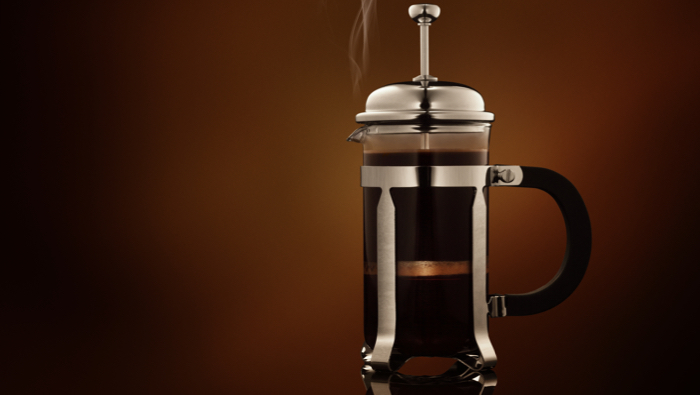An espresso (ess-PRESS-oh) is a method of preparing coffee. To make an espresso, freshly roasted coffee beans are ground and tightly packed or tamped into a “portafilter”. High-pressure water is then forced through the grounds and extracted in small, concentrated amounts.
A unique characteristic of the espresso is a top layer of foam known as the crema, which is a by-product of the high-pressure extraction process. Some coffee lovers prefer to be creative with their cup of espresso by adding milk.
Making a delicious cup of espresso depends on the quality of beans. It is important to pay attention to where the coffee beans you buy are grown as they influences the overall taste of the coffee. For example, coffee grown at high altitude areas tend to have sweet, fruity flavor and an inviting aroma- attributes that get pronounced in a cup of coffee.
These are 11 highly recommended coffee brands for making a delicious cup of espresso.
Harrar (Ethiopia)
Heavy-bodied, spicy and fragrant, Ethiopian Harrar coffee is a wild and exotic dry processed (natural) Arabica coffee that is grown on small farms in the Oromia region (formerly Harrar) in southern Ethiopia at elevations between 1,400 meters and 2,000 meters. The province of Harrar, is east of Addis Ababa, the country’s capitol. A good Harrar is bold and edgy with a complexity and spice tones that may include cinnamon, cardamom, blueberry jam, apricots, compote, even smoke, and with a lingering finish
2. Nyeri AA (Kenya)
Nyeri is a high altitude region in Central Kenya. The coffee has flavors of tobacco with savory notes. Jammy with pomegranate and red wine acidity. It is also marked by black-currant or berry flavors with lots of structure and complexity. There is a backbone of dry, red wine.
3. Kigali (Rwanda)
Kigali coffee offers a silky, creamy body along with the floral notes of Ethiopian Yirgacheffe coffee and the acidity of a Kenya coffee. The aroma may provide hints of lemon and orange blossom with floral notes complementing the sweet citrus qualities with hints of caramel in the aftertaste.
The sweet flavors of a good Rwandan Bourbon coffee are suggestive of caramelized cane sugar along with spice notes of clove, cinnamon and allspice and rose floral aromas. The buttery creaminess of the body carries into the aftertaste.
Kigali has characteristics somewhat similar to other East African coffees such as Zimbabwe and Kenya.
4. Mbinga (Tanzania)
The aroma of a Tanzania coffee may exhibit a rustic note and sometimes a brown bread sweetness. The aftertaste lingers with a slight suggestion of East African wildness. The acidity levels of Tanzania coffee are slightly muted compared to Kenyan coffee, are also less consistent with a milder body. Although the fruit and acidity are more understated they still shine brightly. Ground, dry Tanzania coffee may present a sweet molasses fragrance that is slightly floral with notes of apple fruit.
5. Kirimiro (Burundi)
Burundian coffee tends to be sweet with a bright acidity, big body, and citrus, blueberry, and wild notes. High-quality, high-altitude Burundi coffees have fruits, flowers, and honey notes with consistency, balance, and body.
The sweet and clean flavor along with other characteristics of Burundi coffee has often led to comparisons with the coffees of neighboring Rwanda, particularly in the northern region of Kayanza, where it neighbors on the Rwandan border.
6. Nyika Plateaux (Malawi)
A coffee unlike any other from Africa, Mzuzu Union displays unique tropical fruit characteristics with a rich, full body. A hidden gem of African coffees, this unprecedented selection excites and inspires with its depth and vibrancy including a light papaya note.
Nyika Plateaux prefers a medium roast as this allow its delicate qualities to shine and enhance the coffee's bright acidity.
7. Bamikele (Cameroon)
After the coffee cherry have been harvested by hand picking and then de-pulped, the coffee berry pulp is mixed with the soil around the coffee plants in order to supplement the soil nutrients.
As Cameroon continues to improve its cultivation and processing methods an increasing amount of some of the best Arabica coffee is coming from the region which is most known for such coffees as Kenya, Tanzania and Ethiopian Coffee
8. Kwanza Sul (Angola)
The coffee has flavors of natural coffee with a light, sweet finish.
9. Rwenzori (Uganda)
A good brewed cup of Rwenzori coffee exhibits cupping notes similar to the desirably winey acidity of a fine East African coffee, with sweet chocolate flavor and rich texture. Generally speaking, the lower complexity and lighter body of Ugandan coffees makes them generally less fruity than the coffees of neighboring Zimbabwe, Tanzania, or Kenya.
The Robustas from the Lake Victoria basin are well suited to the clay-rich soils, and benefit from some high elevations in the region. They’re able to develop higher acidity than lower-altitude grown Robustas, making them a decent cup.
10. Yirgacheffe (Ethiopia)
Ethiopian Yirgacheffe coffee beans are known for their sweet flavor and aroma with the right balance of body and acidity. Yirgacheffe beans also carry a spicy note and fragrance and are frequently rated as some of the highest quality Arabica coffees in the world. You will also experience the blueberry note which is unknown to any other coffee in the world.
11. Kirinyaga AA (Kenya)
Year after year, Kirinyaga coffee has earned top ranking from Coffee Review, an online publication that analyses the quality of beans globally.
Coffee grown in Kirinyaga is well known for ripe, fruit-forward profiles. Add to this one of coffee's best accidents—the diminutive peaberry—and you have a resounding cup. Many believe that the naturally occurring peaberry—where the coffee cherry produces one plump, round bean instead of two halves—doubles the flavor and sugar of the seed and is easier to roast.


